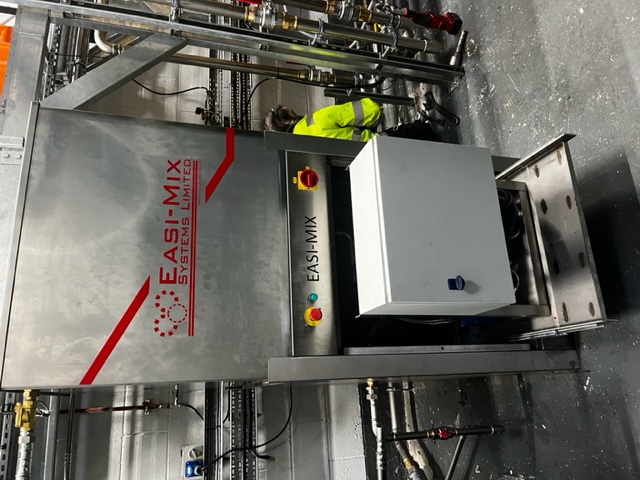HSS gives the customer the complete supply and service for Coolant Management and Tooling. The Knowledge and Expertise they bring to the Industry is a long waited service and will become the market leader.

Coolant Distribution and Management in CNC Machining
Introduction to Coolant in CNC Machining
Key Role of Coolant:
- Reduces heat and friction between cutting tool and workpiece.
- Flushes away chips and debris to prevent damage.
- Enhances surface finish and improves tool life.
Importance of Proper Management:
- Maximizes efficiency and productivity.
- Reduces operational costs.
- Ensures safety and cleanliness in the shop environment.
Types of Coolants
Water-Soluble Coolants:
- Commonly used for general-purpose machining.
- Mixture of water and soluble oils, providing cooling and lubrication.
Oil-Based Coolants:
- Higher viscosity, better lubrication.
- Preferred for heavy-duty machining and high-speed operations.
Synthetic Coolants:
- No oils, designed for high-performance applications.
- Environmentally friendly and more stable than traditional coolants.
Coolant Distribution Systems
Types of Coolant Distribution:
- Flood Cooling:
- Delivers coolant directly to the cutting zone in large quantities.
- Provides maximum cooling, but may generate waste.
- Through-Spindle Coolant (TSC):
- Delivers coolant directly to the tool via the spindle.
- Reduces coolant usage and improves chip removal.
- Minimum Quantity Lubrication (MQL):
- Uses a fine mist of coolant to lubricate the tool.
- Reduces coolant consumption and prevents excess waste.
Choosing the Right System:
- Consider the material being machined, cutting speeds, and tooling used.
Coolant Management Principles
Effective Coolant Management:
- Regular monitoring and adjusting coolant concentration.
- Filtration and cleaning to remove contaminants.
- Maintaining proper coolant temperature.
- Preventing bacterial growth and corrosion.
Coolant Life Cycle:
- Coolants need to be checked regularly for signs of wear and contamination.
- Coolant can be recycled, but only if properly filtered and treated.
Coolant Filtration and Recycling
Filtration Methods:
- Paper Filtration: Simple and cost-effective for large debris.
- Magnetic Filtration: Effective for ferrous material chips.
- Centrifugal Filtration: Separates fine particles from coolant.
Coolant Recycling:
- Filtered coolant can be reused for extended periods.
- Reduces waste disposal costs.
- Ensures more consistent performance of the coolant.
Monitoring and Adjusting Coolant Parameters
Key Parameters to Monitor:
- Concentration Level:
- Regularly test the coolant to ensure correct concentration.
- Too high or low concentration reduces cooling efficiency.
- pH Levels:
- Ideal pH levels to avoid corrosion and bacterial growth.
- Regular pH checks are essential to prevent coolant degradation.
- Temperature:
- Coolant should be maintained at an optimal temperature to prevent breakdown.
- Overheating can reduce coolant effectiveness.
Benefits of Proper Coolant Management
Improved Efficiency:
- Optimal cooling enhances machining precision and tool longevity.
- Reduces wear on CNC machines and cutting tools.
Cost Savings:
- Reduces coolant consumption and disposal costs.
- Minimizes downtime due to equipment failure or coolant contamination.
Enhanced Workplace Safety:
- Prevents accidents by keeping the work environment clean and safe.
- Reduces the risks associated with overheating and spillage.
Common Challenges in Coolant Management
Contamination:
- Chips, dust, and debris contaminating the coolant.
- Proper filtration systems can mitigate this issue.
Coolant Degradation:
- Bacterial growth and microbial contamination.
- Regular monitoring and replacing coolant can prevent this.
Proper Storage and Handling:
- Poor storage conditions can lead to coolant degradation.
- Implement good housekeeping practices to maintain coolant quality.
Conclusion and Key Takeaways
Key Takeaways:
- Effective coolant distribution is crucial for CNC machining success.
- Choose the right coolant and distribution system based on your operations.
- Consistent monitoring and management lead to cost savings and improved performance.
- Implement filtration and recycling systems for sustainability.
- Prioritize safety and cleanliness in coolant handling.
Next Steps:
- Evaluate current coolant management practices.
- Implement improvements based on presentation insights.
- Invest in proper filtration and monitoring systems.
